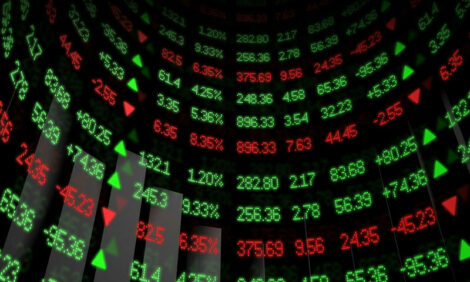



World Food Prices Stay High But Steady
GLOBAL - The FAO Food Price Index averaged 206.7 points in December, nearly unchanged from the previous month, with a sharp increase in dairy prices and high meat values balancing out a steep decline in sugar quotations and lower cereal and oil prices.For 2013 as a whole, the index averaged 209.9 points - down 1.6 per cent from 2012, and well below 2011's peak of 230.1, but still the third highest annual value on record.
Large supplies pushed down international prices of cereals (with the exception of rice), oils and sugar. However, dairy values peaked in 2013, and meat also hit a record.
"Last month, the FAO Food Price Index remained elevated as strong demand for certain high-protein foods continued to drive up prices overall, countering falling prices of major food crops after last year's abundant harvests," said FAO economist, Abdolreza Abbassian.
FAO's FPI is a trade-weighted index that measures prices of five major food commodities on international markets: cereals, dairy products, meat, sugar, and vegetable oils.
Good harvests nudge cereal and sugar prices down
The FAO Cereal Price Index averaged 191.5 points in December, down 2.8 points from November, and the lowest monthly value since August 2010. Large global supplies, following record harvests in 2013, continued to exert downward pressure on international prices of wheat and maize in particular. By contrast, rice prices were up slightly in December.
For all of 2013, the Cereal Price Index averaged 219.2 points, down as much as 17 points, or 7.2 per cent, from 2012.
FAO's Sugar Price Index averaged 234.9 points in December, a sharp slide of 15.8 points from November. This was the third consecutive monthly decline, with the sugarcane harvest in Brazil - the world's largest sugar producer and exporter - exceeding expectations. Adding to the downward pressure on international prices were reports of record production in Thailand, the world's second biggest sugar exporter, as well as good harvests in China.
Overall, in 2013, sugar prices were 18 per cent lower than in 2012.
Dairy and meat hit record high
Dairy prices, on the other hand, were up for both December and for 2013 as a whole.
The FAO Dairy Price Index averaged 264.6 points in December, a rise of 13.2 points over November. Demand for milk powder, especially from China, remains strong, and processors in the southern hemisphere are focusing on this product rather than on butter and cheese.
During 2013, the dairy index averaged 243 points - its highest annual value since its inception.
The FAO Meat Price Index averaged 188.1 points in December, just slightly above its November level. Prices for bovine and pig meat moved higher: demand from China and Japan have resulted in beef prices showing consistent growth since last June. Prices for poultry were stable, while those for sheep meat moved lower. Still, in 2013, the index remained historically high, well above pre-2011 levels.
Drop in vegetable oil prices
FAO's Vegetable Oil Price Index averaged 196 points in December, a decrease of 2.5 points from November.
For 2013 as a whole, the index averaged 193 points - well below 2012's average of 224 points - with palm oil falling to a four-year low.






